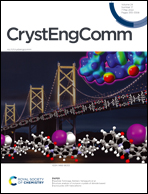Effect of the crystallization mechanism on zeolite BEA textural and acidic properties†
Abstract
Two zeolite BEA catalysts have been synthesized via alternative mechanistic pathways involving solution-mediated transportation and solid–solid hydrogel rearrangement. In the synthetic procedures selected, the composition of starting reaction mixtures and the reaction conditions were the same, the only difference was in the sequence of reactant mixing. The products obtained were characterized using a complex of physicochemical methods including XRD, X-ray fluorescence analysis, XPS, SEM, TEM, low-temperature nitrogen adsorption–desorption, NH3-TPD and FTIR spectroscopy of adsorbed probe molecules. The results demonstrate that the crystallization mechanism affects the crystal morphology, textural characteristics and acidic properties of the zeolite materials formed. The solution mediated mechanism leads to formation of dense polycrystals with an Al-enriched core, whereas the solid–solid hydrogel rearrangement results in hierarchical aggregates with uniform aluminum distribution along the crystal and higher content of Brønsted sites. Evaluation of the catalysts in liquid-phase alkylation of benzene with propylene points to higher activity of zeolite BEA obtained via the solid–solid hydrogel rearrangement pathway.



 Please wait while we load your content...
Please wait while we load your content...